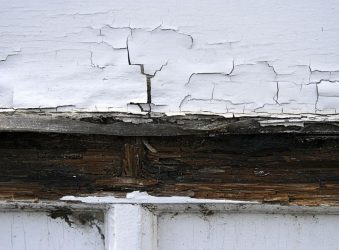
ROTTEN WOOD IN YOUR CRAWLSPACE? COMMON PROBLEM IN CHARLOTTE HOMES
One of the biggest architectural challenges Charlotte homeowners face today is the result of the way homes were built in previous decades. In earlier years, especially those prior to 1990,...
One of the biggest architectural challenges Charlotte homeowners face today is the result of the way homes were built in previous decades. In earlier years, especially those prior to 1990, the material used for a crawlspace was not always treated in a way to minimize wood rot and as a result homeowners across the country often deal with crawlspace issues such as severely damaged and decayed wood, rotten wood or dry rot.
WHAT CAUSES A CRAWLSPACE TO HAVE ROTTEN WOOD?
Wood rot, or dry rot is caused by several types of fungus, which leaves the wood dry and brittle. It occurs when wood is in an area with too much moisture. Wood rot can affect not just wood elements, but can also grow through mortar, concrete, masonry and even behind plaster.
The wood rot fungus, if not stopped, will weaken the wood and can cause it to deteriorate. Rotten wood will affect floor joists, sill plates, wood beams, girders, band boards, and subfloors, resulting in the need for significant structural repair being done to your Charlotte home.
At its foundation, outdated building codes and bad advice are the cause of wood rot in a crawlspace. In previous years, it was believed that having foundation vents, stapled vapor barriers, drainage systems or fiberglass insulation was a way to prevent dry rot in a crawlspace. Sadly, these methods may actually cause the problem if they trap moisture in the crawlspace. That moisture then encourages the growth of the fungus and eventually can damage your home. In addition, it often results in mold and spores being released into your home’s ventilation system as well.
SIGNS OF CRAWLSPACE WOOD ROT
If you are uncertain as to the age of your home or if your crawlspace is constructed in a way that cause lead to rotting wood, then it is important that you take time to inspect all home crawspaces in Charlotte for indicators of a problem. Some of these include:
- Damaged timber that is red, rust or brown colored on the crawlspace wood
- Dry or brittle wood that crumbles in your hand
- Grey strands similar to cobwebs on the wood
- White silky cotton wool-like cushions forming on the wood. This is produced when the dry rot begins to spread.
- A mushroom-like growth forming on the wood. This indicates that the life-cycle of the fungus is starting over.
- A stark, dank smell permeating the wood
If the crawlspace wood rot is caught early enough, it is possible to rebuild and replace the wood. In the event that it has begun to grow and spread, it might be necessary to take more significant actions such as sealing off vents, adding crawlspace supports or even re-designing the crawlspace and installing a dehumidifier.
At Structural Repair, we understand the importance of addressing a wood rot situation sooner rather than later. We will work with you and determine the best approach to correcting the problem so that you can have many more years in your home. If you have questions about structural repair to your Charlotte, NC location, contact us today, so we can start taking steps to improve your home’s crawl space.
Image courtesy of freerangestock.com



